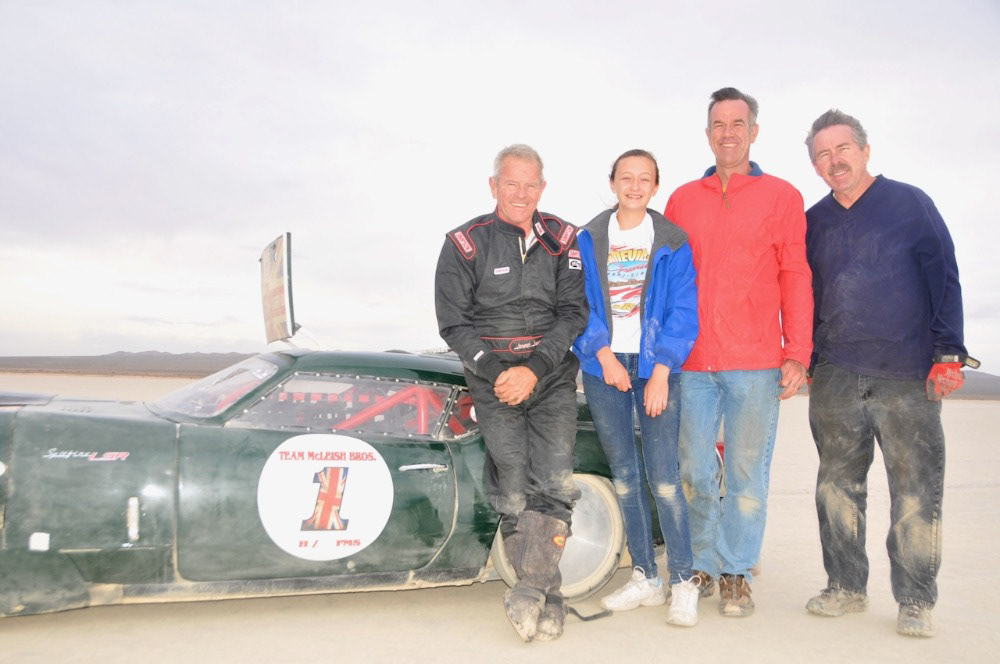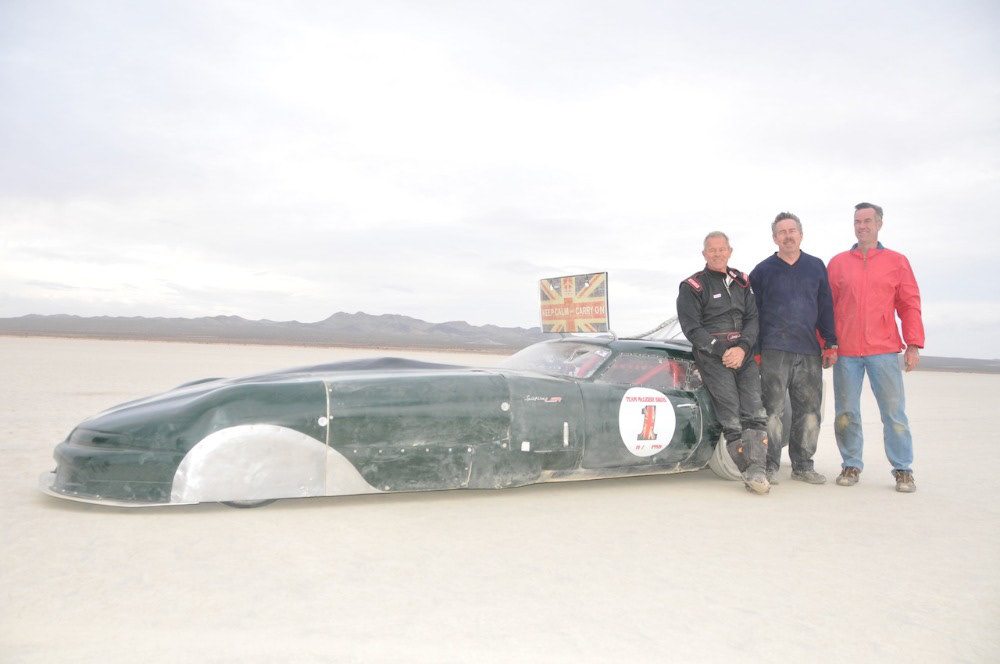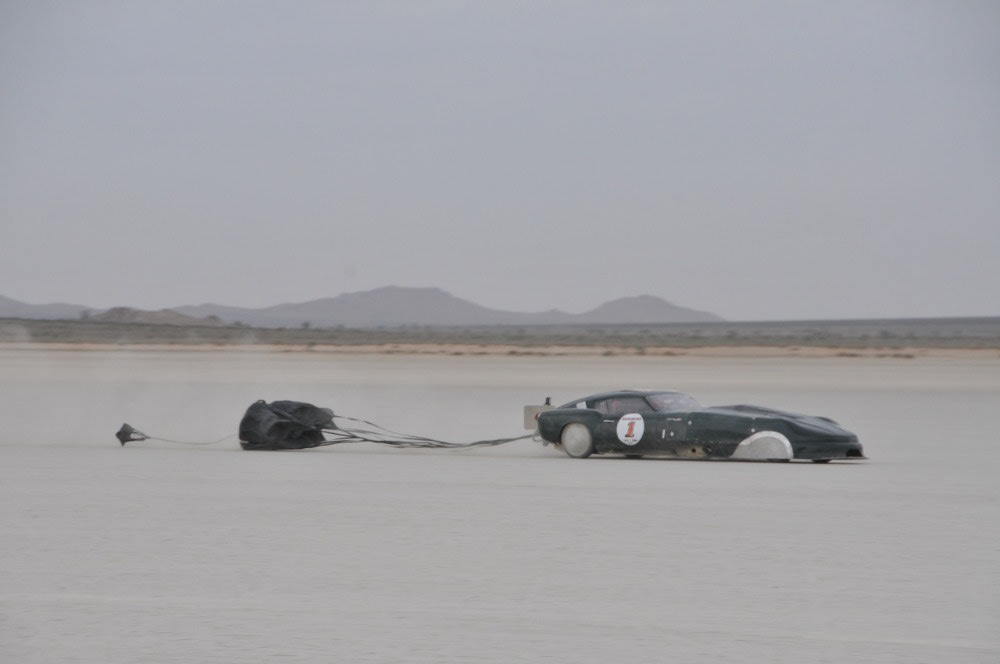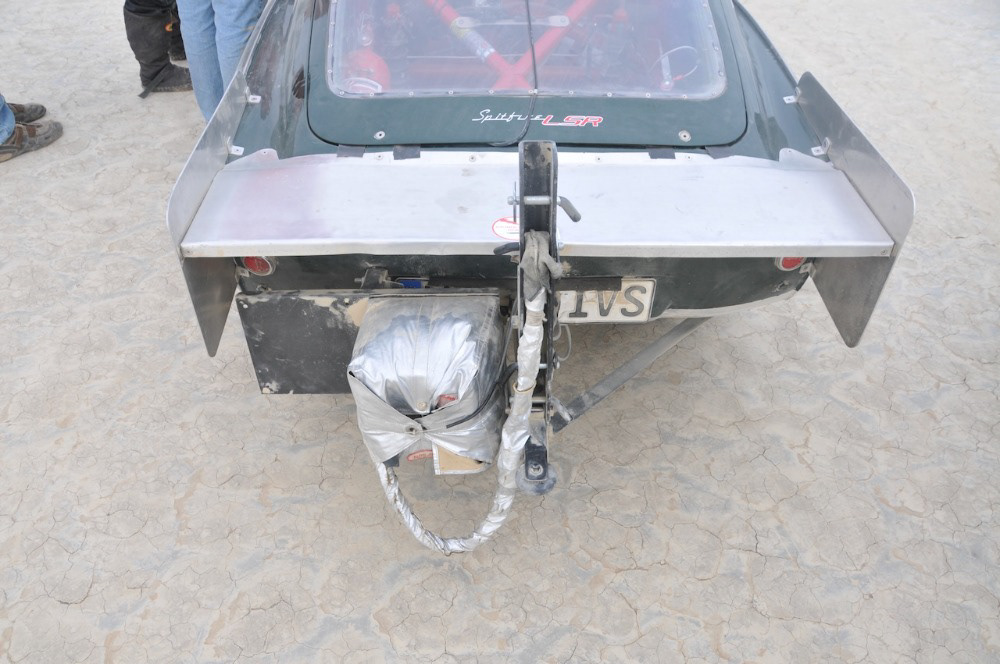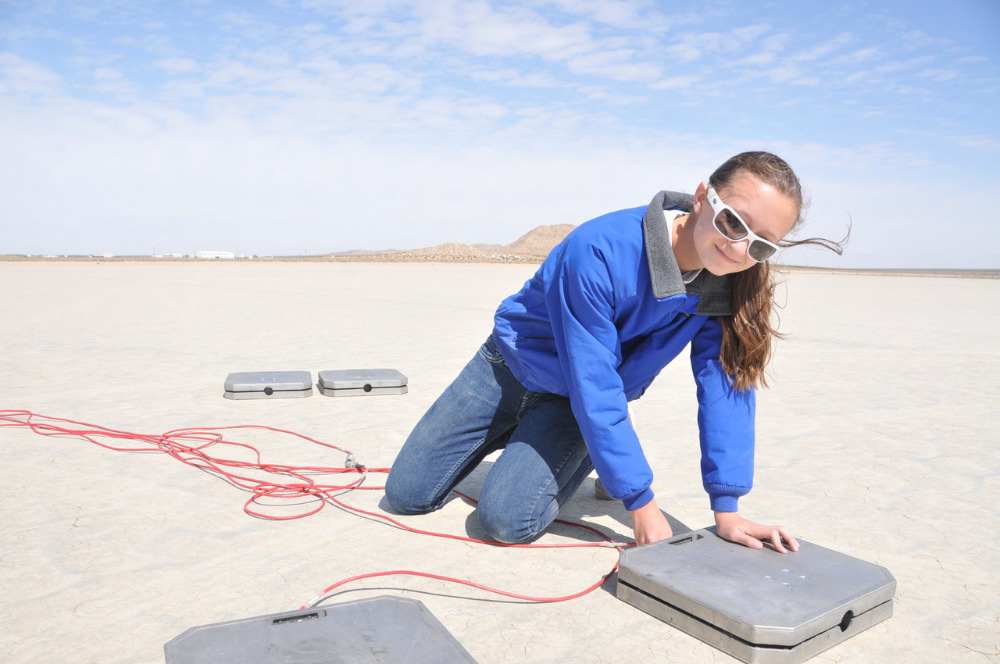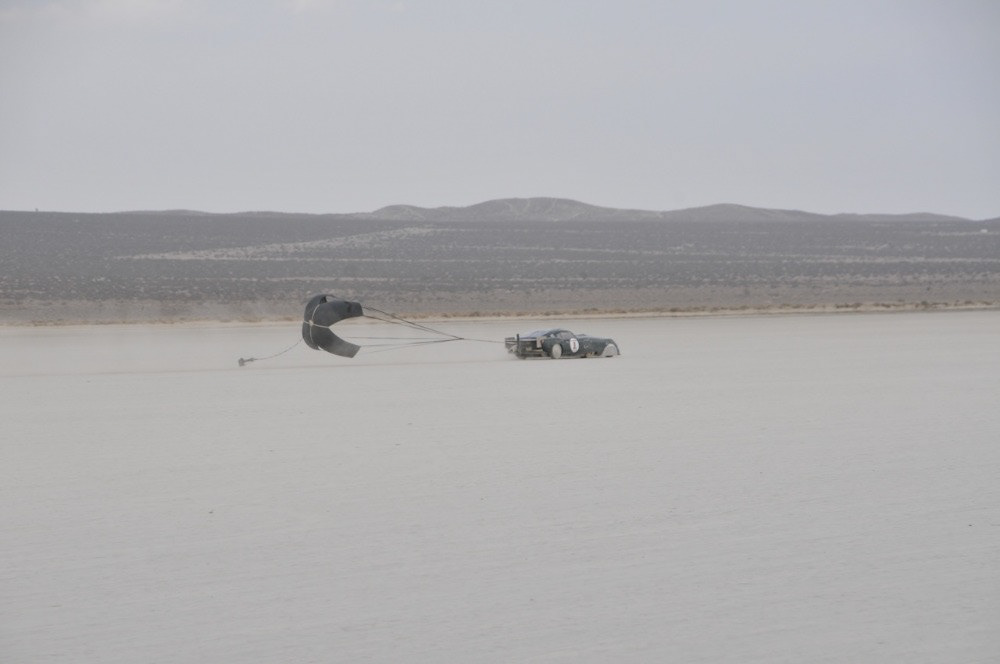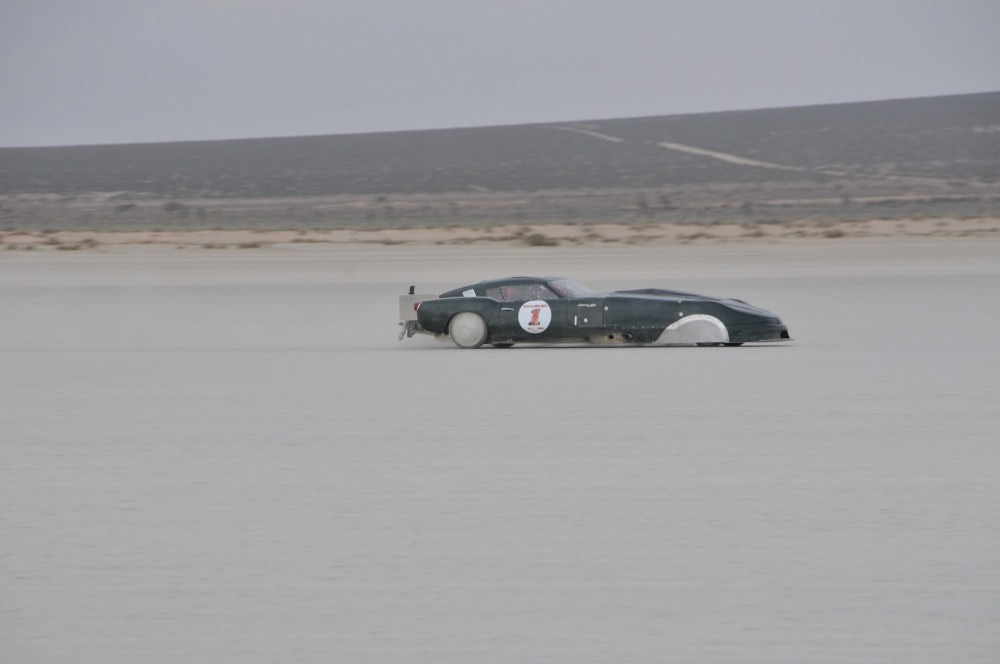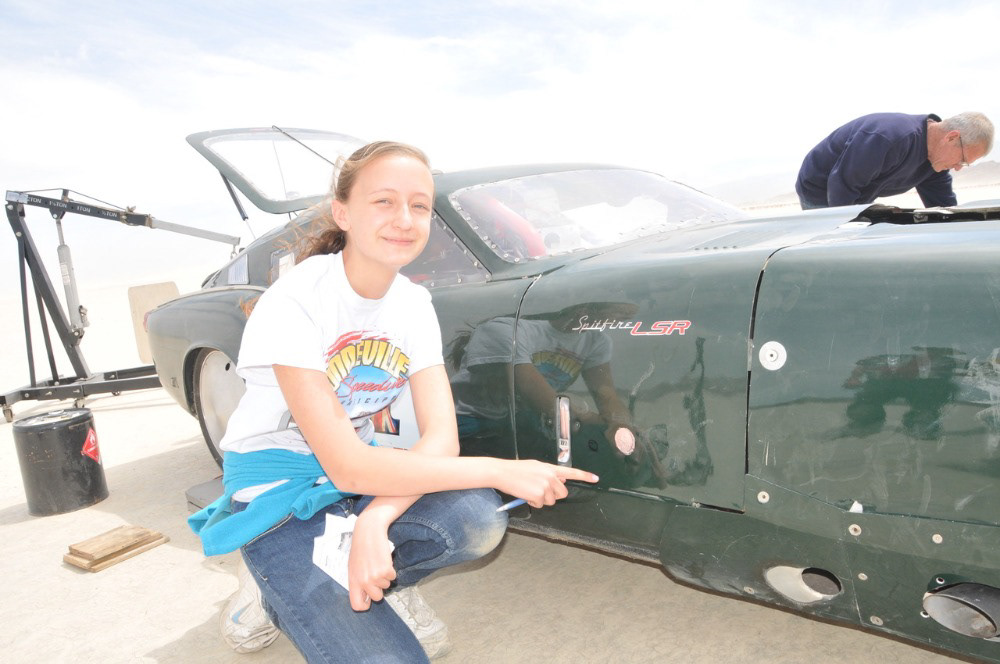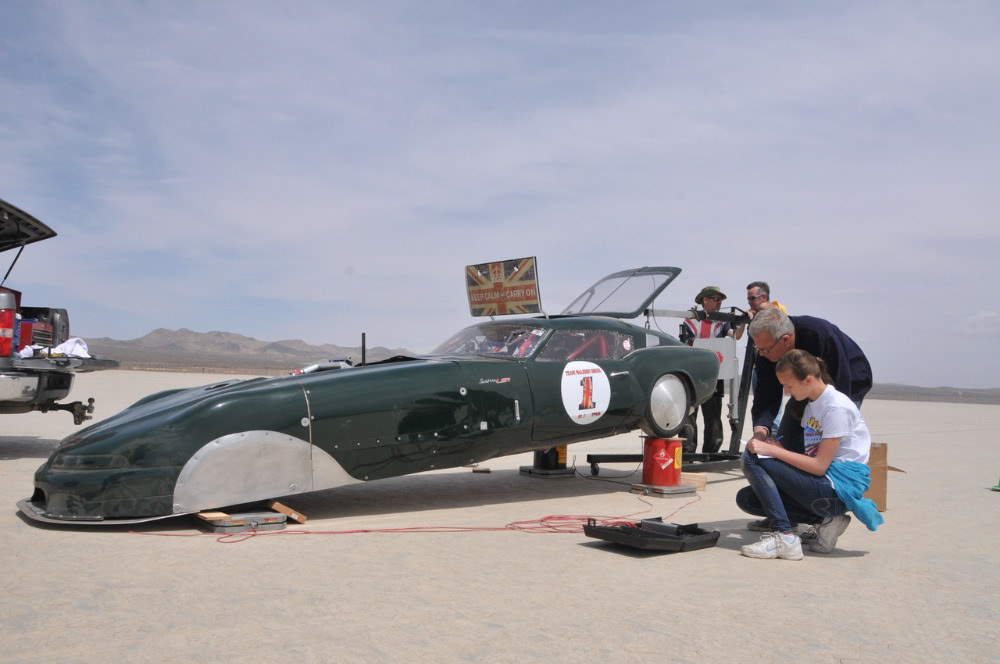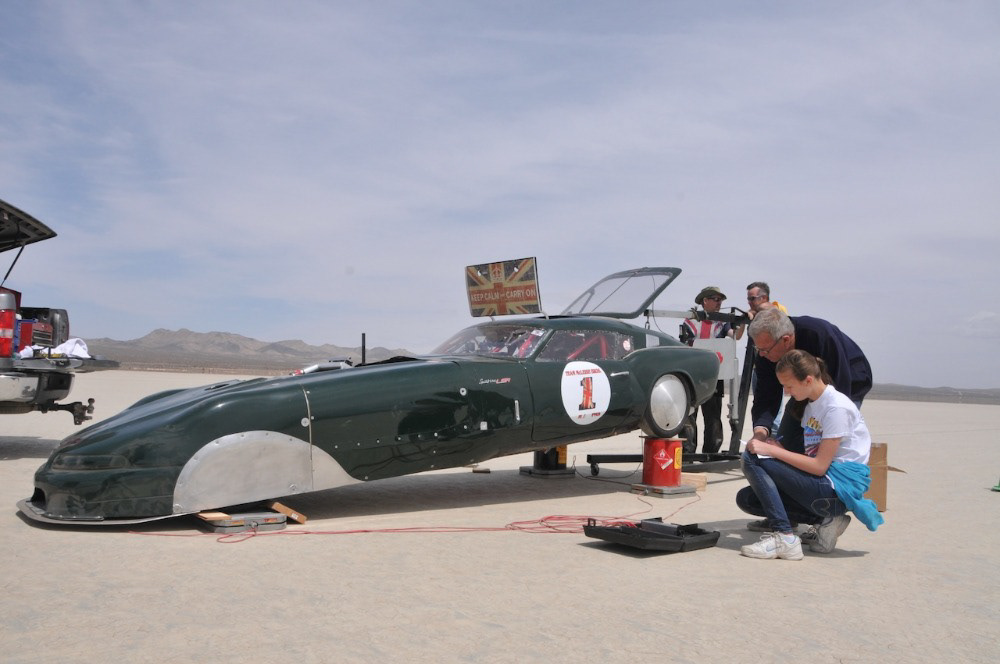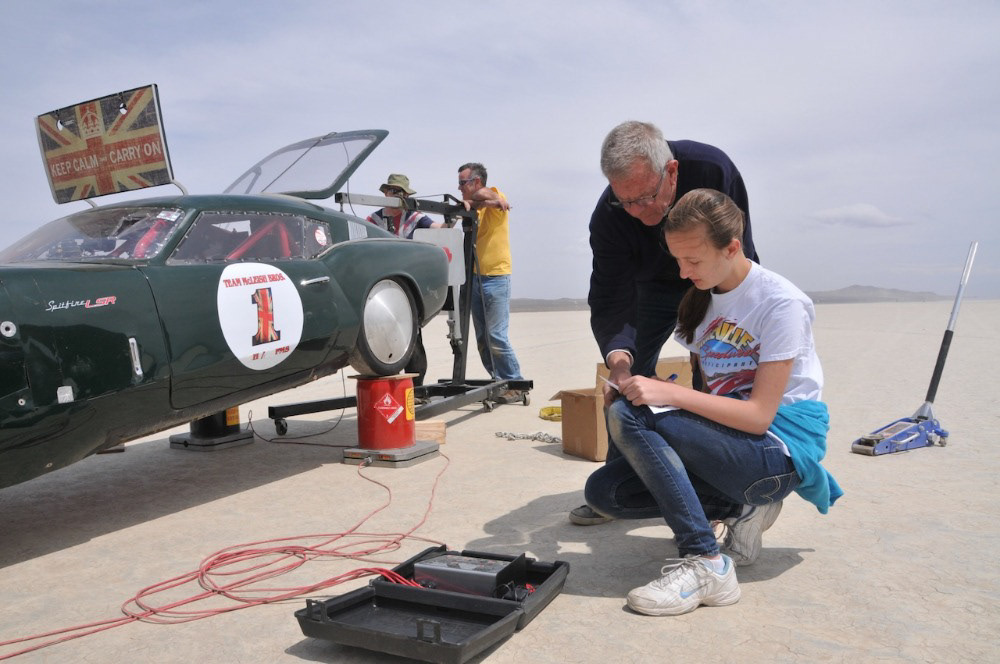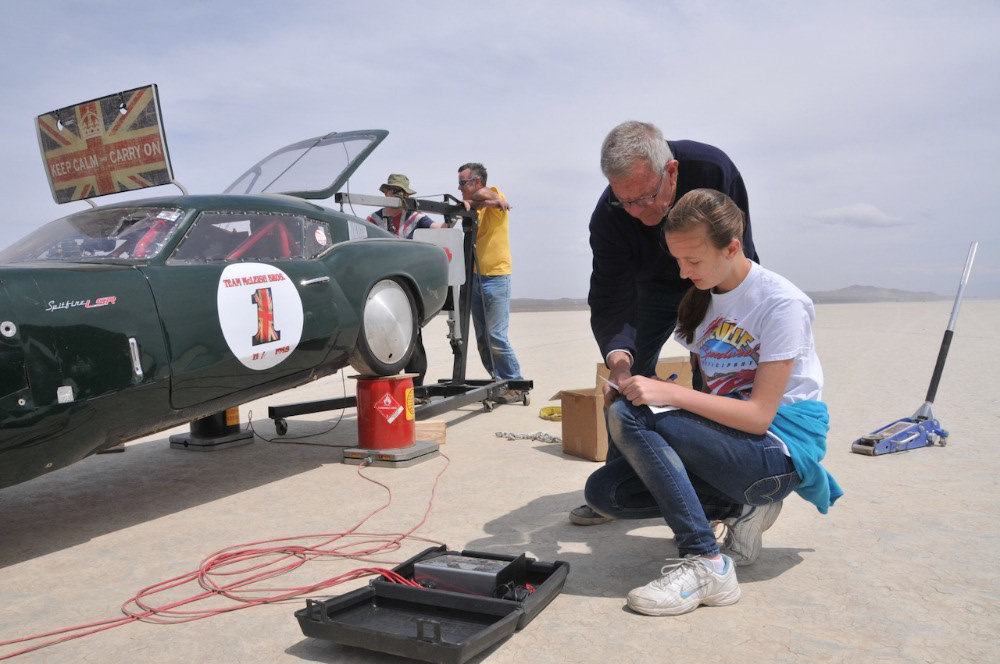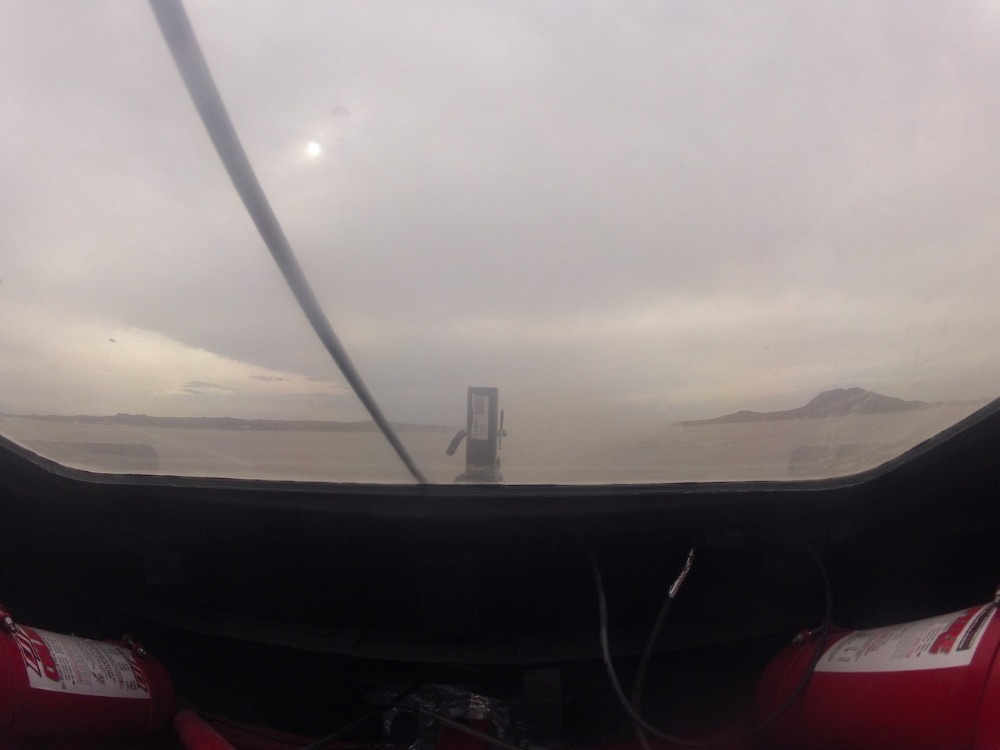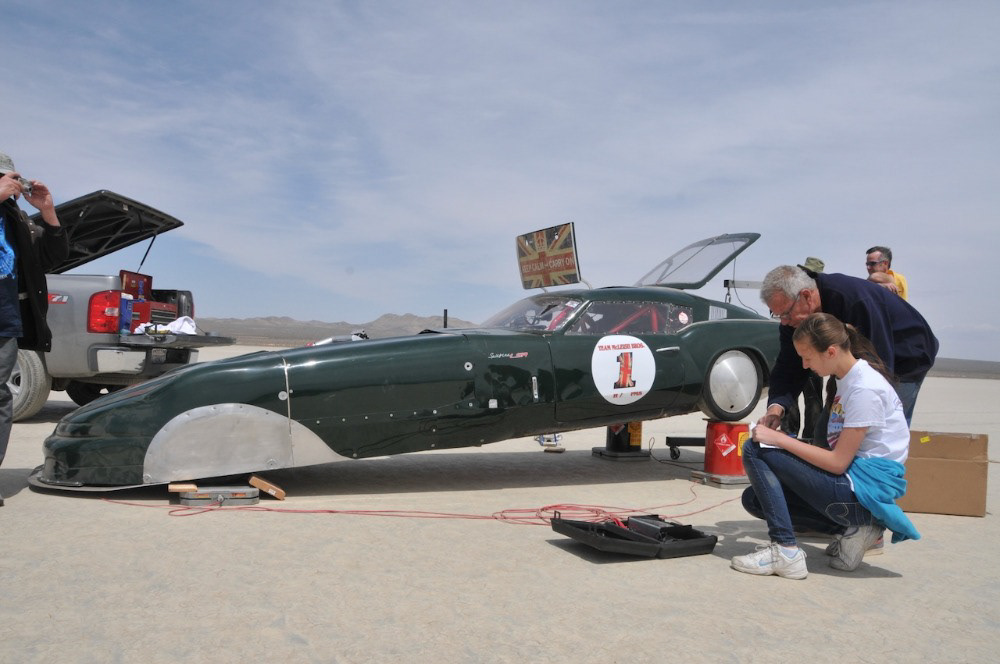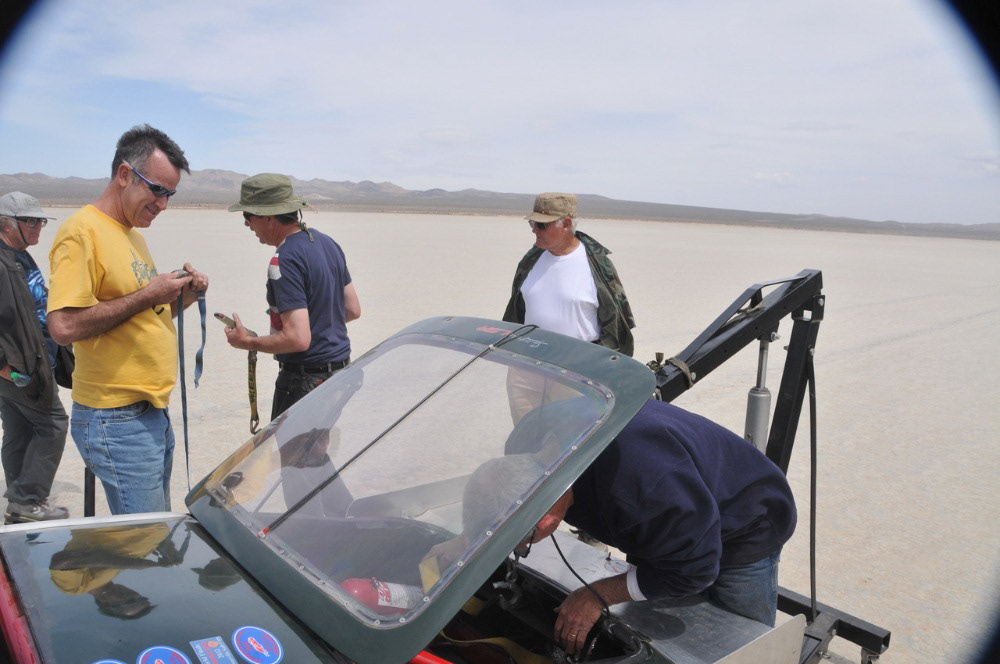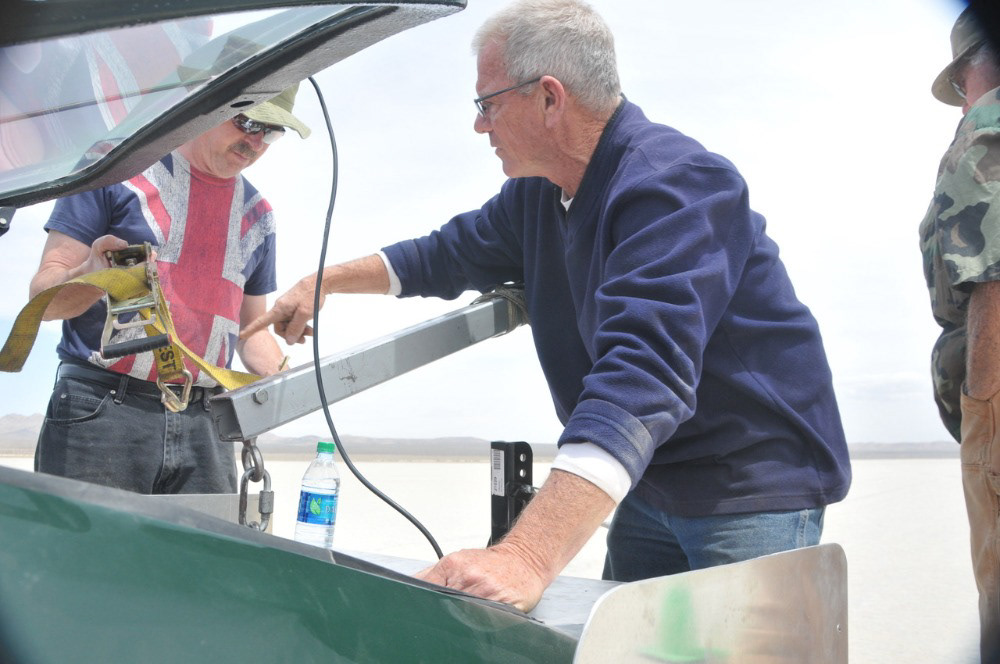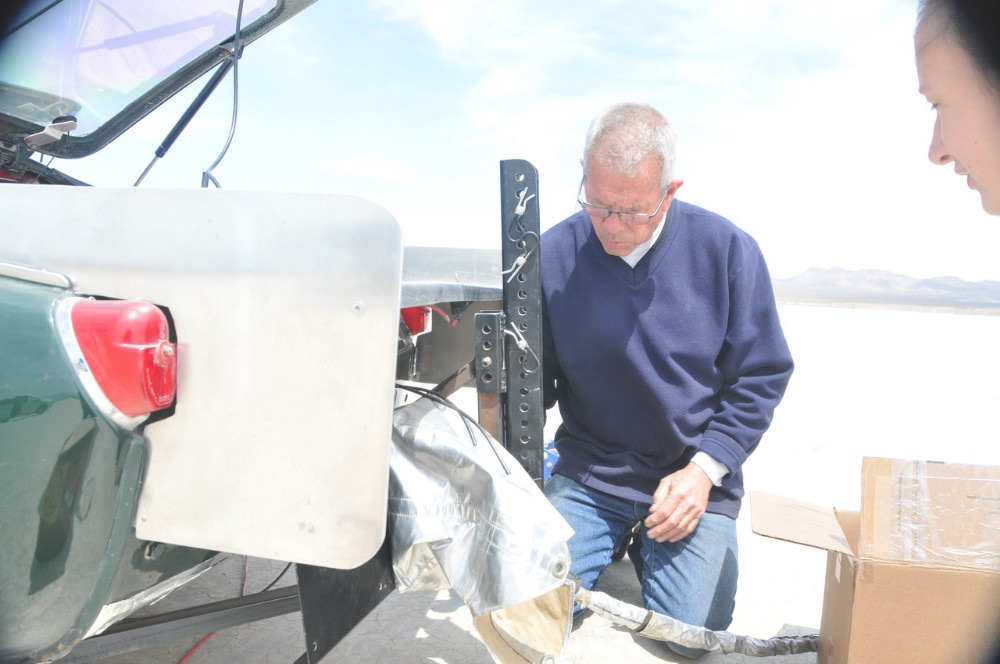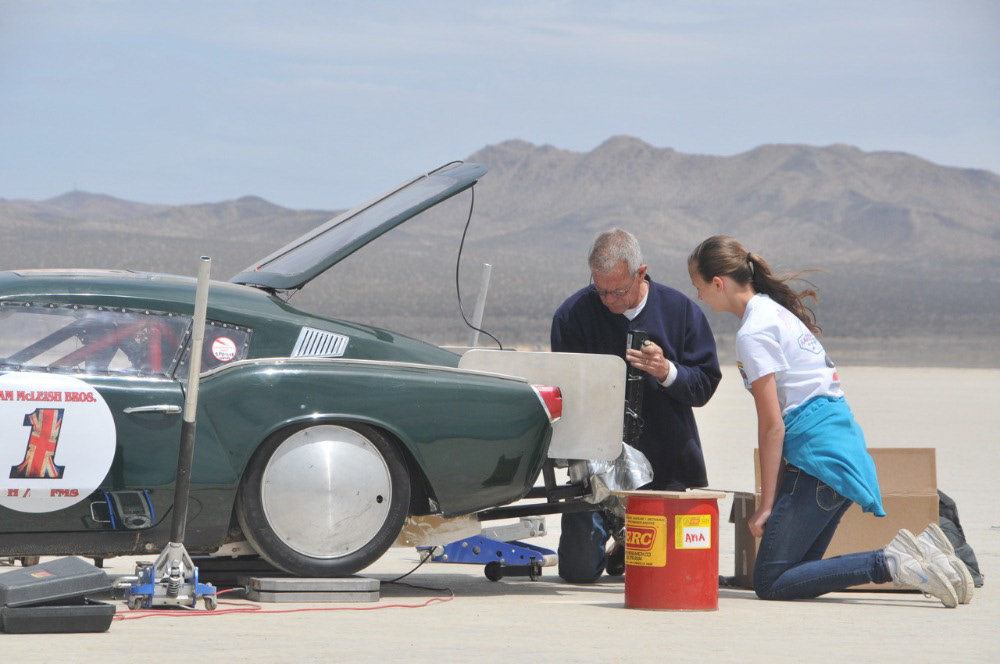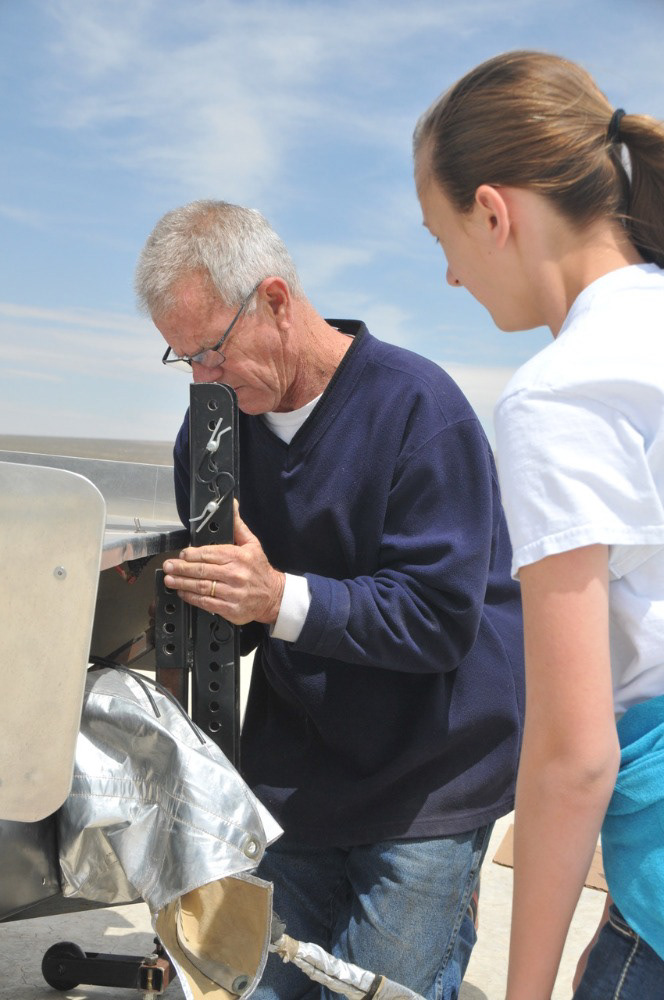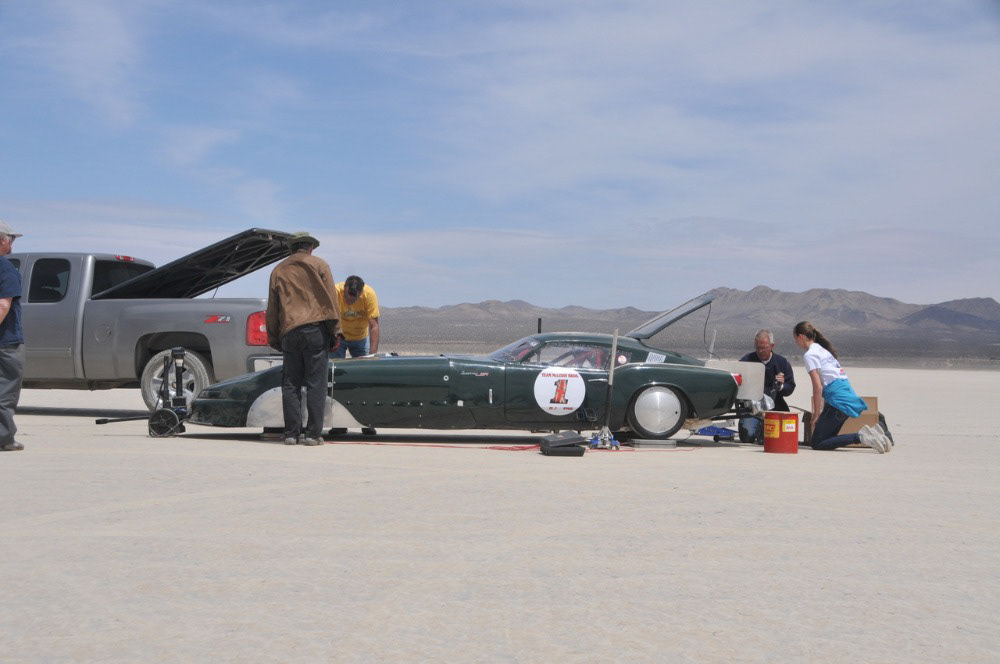This endeavor started as a science fair project for school but has since progressed into much more. The idea was hatched after witnessing an accident at Bonneville Speedweek where a Triumph GT6 flipped after parachute deployment. The project aimed to determine the best way of mounting a drag or land speed racing parachute, to prevent loss of grip on either the front or rear tires. I tested this using a variable parachute mounting device (pictured right), that I designed and had manufactured by a local fabricator. Ride height sensors (rotary potentiometers with large arms) were hooked up to the front and rear suspension. Then, trials were run (with my dad driving) where the parachute was pulled at 100mph at every 5 different points ranging 71cm in height. My data determined that the best mounting point was where the center of gravity (CG) of the vehicle, pull point, and chute blossom were aligned. This is because applying the force of the deceleration in line with the CG prevented any moment about that point.
Mount Point of a Parachute on the Ride Height of an Acura RSX Land Speed Vehicle”. I have linked a copy of that paper below. I have also linked the supplemental report describing my subsequent redesign of the parachute mounting on the car that inspired this project.
In the Fall of 2020, I wrote a page and a half article about my experience and recommendations in parachute mounting for the November 2020 #225 of DSport. The text from this article is included in an online DSport article, which is also linked below (the sections I wrote are labeled with my name).
